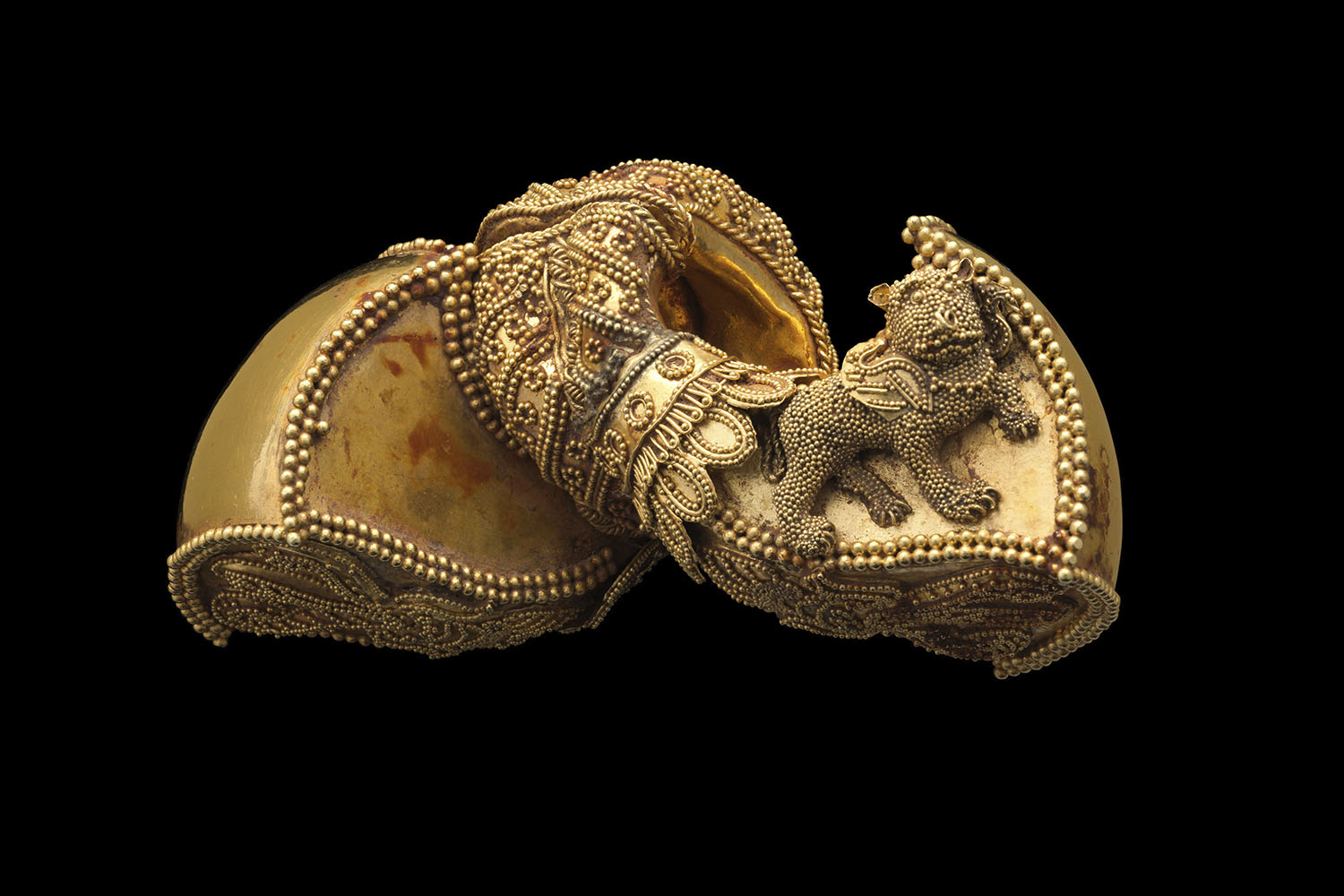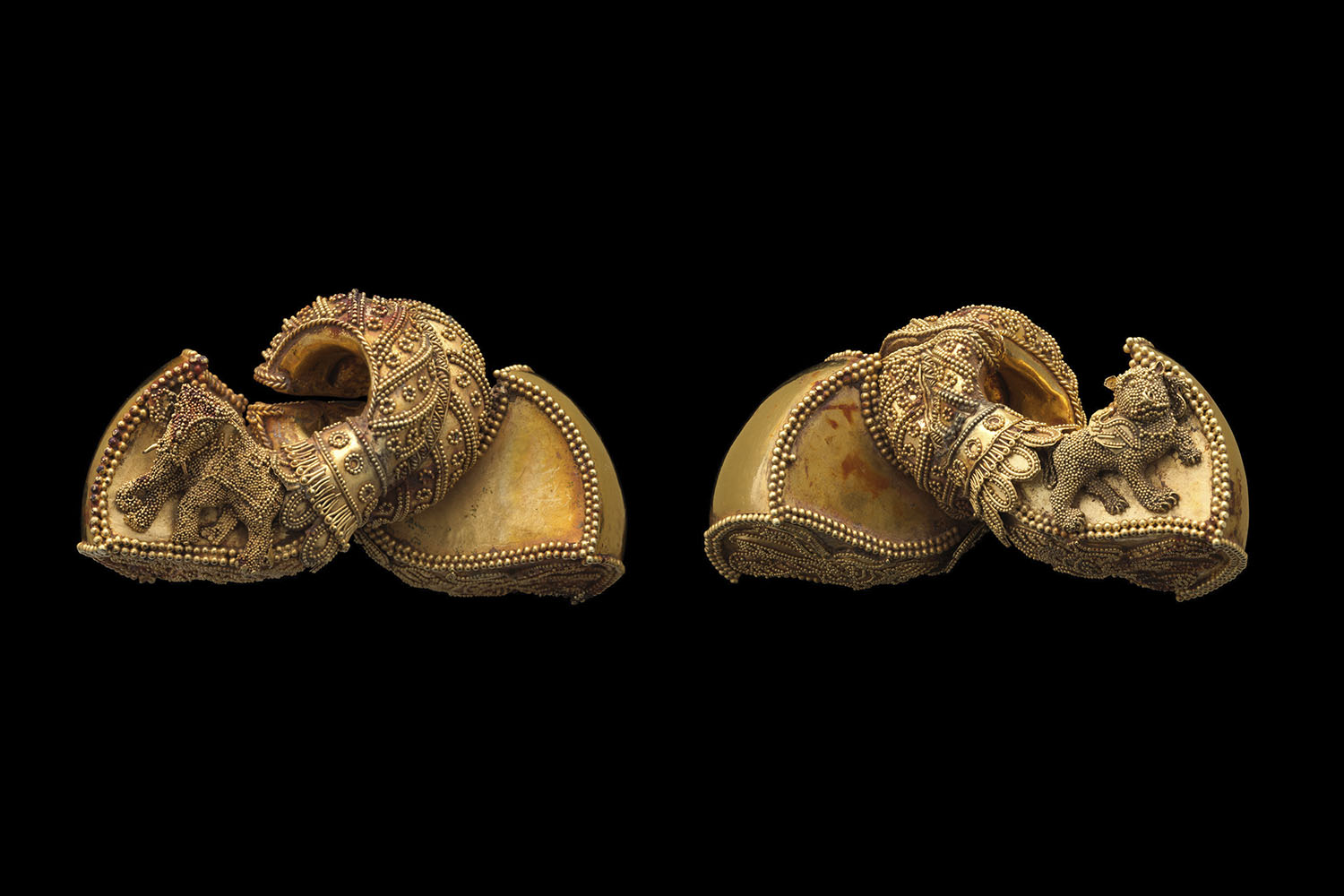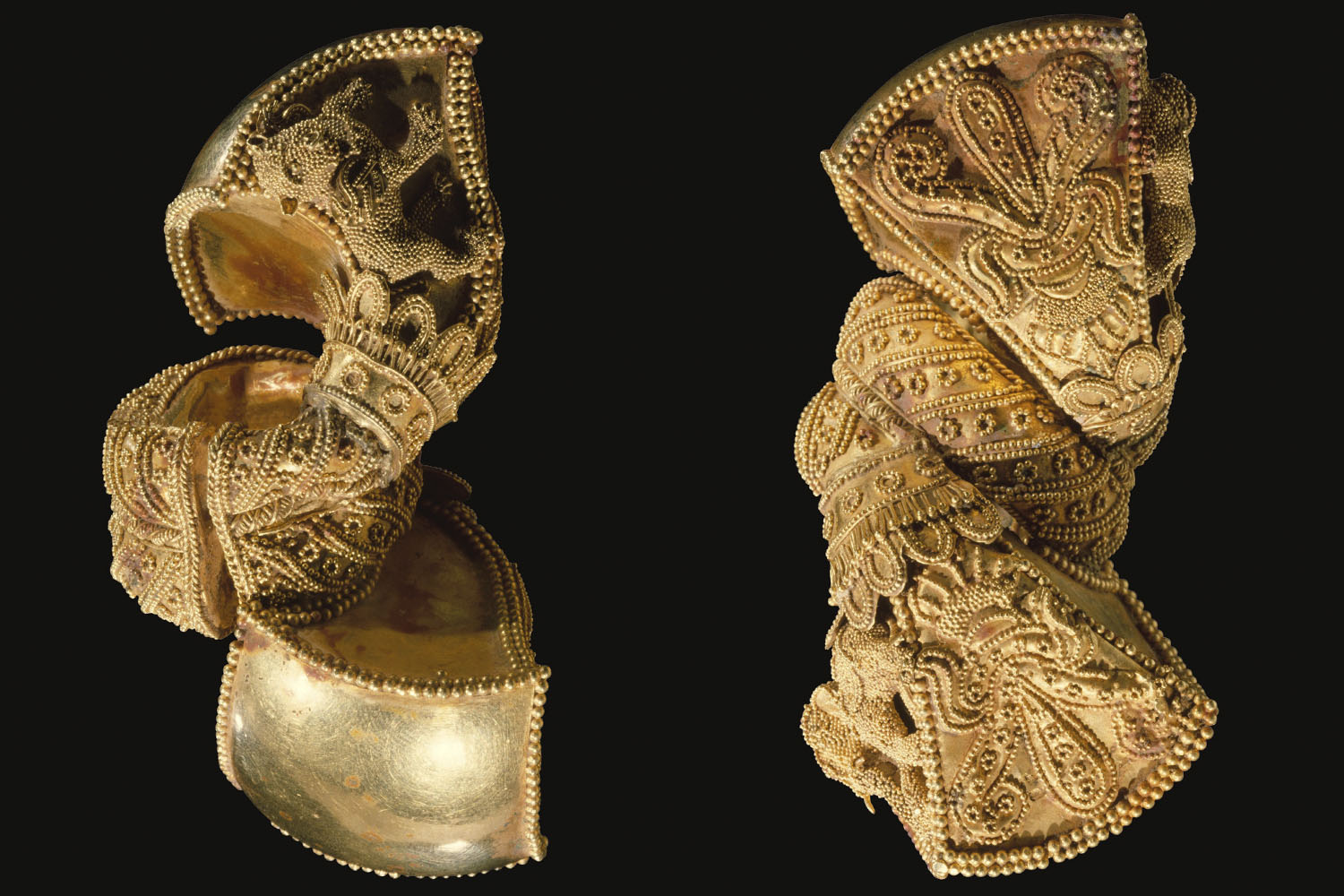ARTICLE
A Pair of Royal Earrings, Andhra Pradesh
Dated to the first century BCE, a pair of large gold earrings speculated to be from present-day Andhra Pradesh is one of the oldest pieces of jewellery found in the Indian subcontinent. Classified as prakaravapra kundala in their form, the spiral earrings constitute the only surviving example of jewellery that is depicted in ancient Indian sculpture. They show highly sophisticated craftsmanship; this, together with their size and weight and the emblematic motifs they contain, indicate that they are likely to have been royal commissions.
Made entirely of gold, each earring, about 7.6 centimetres long and 4 centimetres wide, takes the form of a vine-like stem spiralling into a trumpet-shaped bud form at both extremities. The curving stem in the middle is decorated with gold granules in diagonal rows, with small rosettes between them. The surface decoration continues outward, with larger rosettes and petal shapes appearing at the base of the buds, which have a rectangular cross-section and convex end. On each end of the earring, one of the flat faces is adorned with a vase motif lush with fronds and other floral elements symbolising fertility and plenitude, and while otherwise identical, the two earrings show a slight difference in the design of these fronds. The adjacent face shows a saddled and harnessed elephant on one end, and a bejewelled winged lion on the other end. Both the repousse animals are emblems of royalty, and are elaborately decorated, covered entirely with granules and pieces of gold wire and sheets.
The ear ornaments were worn so that they hung vertically with the vase motif facing forward, the lions facing inward and the elephants facing outward. As with many of the ancient ear ornaments depicted in Indian art, these too are likely to have considerably distended the wearer’s earlobes, and possibly rested on their shoulders. Depictions of the Buddha commonly show such earlobes, believed to have been elongated by jewellery during his early life as a prince.
Earrings and other ornamentation of a similar style are seen on men and women in the sculptures of Bharhut and Sanchi. However, these earrings show a particularly striking resemblance to those seen in a first century BCE sculpture of the chakravartin (ideal or universal ruler) on a stupa at Jaggayyapeta in present-day Andhra Pradesh. As most jewellery from the ancient period in India is believed to have been melted down after the death of its wearer — possibly to avoid the passing on of their karma — this extant pair of ornaments is highly significant. Apart from demonstrating the quality and complexity of goldsmithing that existed in ancient India, it provides concrete evidence that the jewellery depicted in sculptures and terracottas of the time did in fact exist. Moreover, they indicate that such jewellery was more than decorative — the earrings’ material worth and the symbols they depict make them markers of royalty and power.
The pair is housed in the Metropolitan Museum of Art in New York, as part of the Kronos Collections gifted to the museum in 1981.
Bibliography
Lerner, Martin. The Flame and the Lotus: Indian and Southeast Asian Art from the Kronos Collections. New York: The Metropolitan Museum of Art, 1984: 20–21.
The Metropolitan Museum of Art. “A Pair of Royal Earrings.” The Collection: Asian Art. Accessed March 30, 2023. https://www.metmuseum.org/art/collection/search/51279.
Thakur, Priya. “Floral Jewellery in Ancient Indian Tradition.” SAARC Culture
6 (2018): 82. http://saarcculture.org/wp-content/uploads/2019/05/vol6_2018.pdf.









